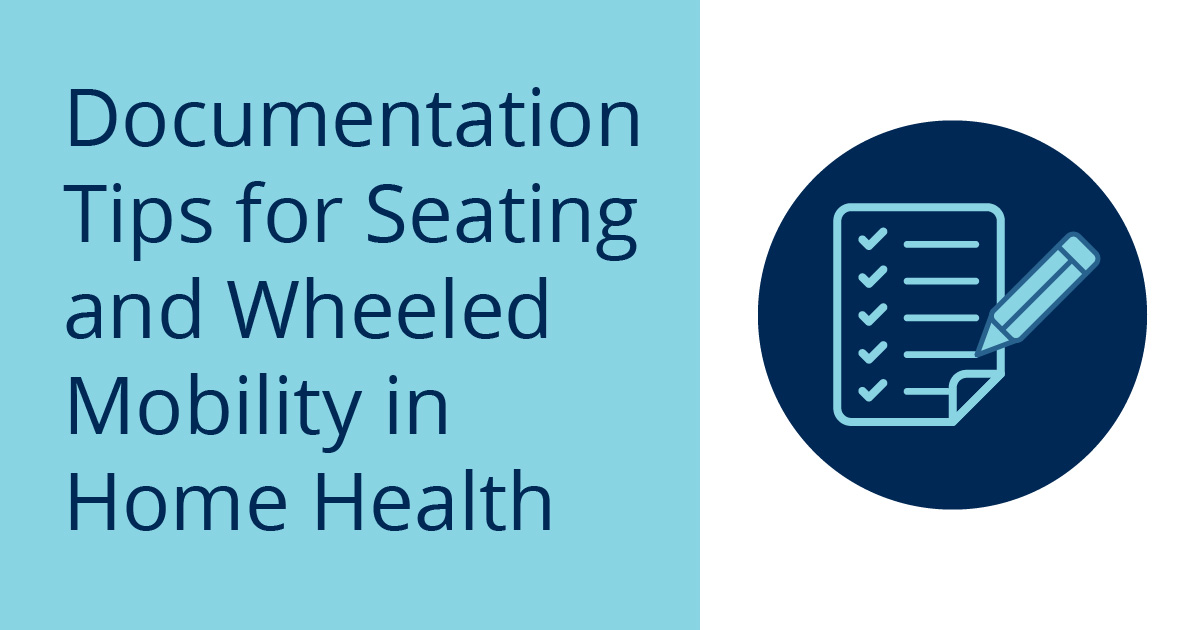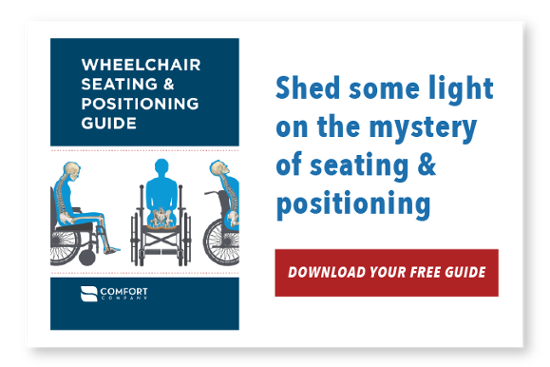Part 5 in our series about Seating & Wheeled Mobility in Home Health. See Part 1, Part 2, Part 3, and Part 4.
In our series about Seating & Wheeled Mobility in Home Health we've taken a look at challenges that a Home Health therapist faces as well as three of the top common misconceptions of seating and wheeled mobility in the home health setting. Today we're going to discuss documentation and some tips and tricks to make the process easier and faster.
More often than not it feels like you have no extra time to spend on documentation. If you’re not someone who performs seating evaluations daily, weekly or even monthly, this feels particularly overwhelming and scary. As therapists we tend to think that we don’t have the time compounded with the feeling a lack of confidence in our abilities to correctly complete the write-up that’s needed to justify the wheelchair and its components for someone. Fear not, this process can be something that flows easily into your everyday practice and does not require additional documentation time on your part. Like anything else, it takes practice.
Think back when you were a student and you went on your first clinical rotation. The first time you sat down to write up an evaluation it probably took you an hour, right? That first evaluation took time because you had to think about how you were saying things and where you were putting things. Now you can probably sit down and do that same write-up in five or ten minutes. Documentation for seating and wheeled mobility equipment is the same way. As you start to have to add in just a few of those additional pieces that specifically relate to mobility and the need for wheeled mobility, it may take you a little extra time at the beginning. But as you complete more of this documentation, just like anything else that we do every day, it becomes second nature.
When you complete your initial evaluation and you determine that your client has mobility needs, start thinking about the extra documentation that will be required for your justification.
Typical Initial Evaluation |
Wheelchair Evaluation |
|
Medical History Home Environment ADLs Review of Systems Sensation, Skin Integrity Pain Cognition, Perception, Behavior Posture and Balance Muscle Strength, Tone, Motor Control, ROM Ambulation
|
Medical History Home Environment Household Measurements ADLs Review of Systems Sensation, Skin Integrity Pain Cognition, Perception, Behavior Posture and Balance Sitting Muscle Strength, Tone, Motor Control, ROM Ambulation, Wheelchair Mobility Anatomical Measurements Current Equipment Transportation |
Keep in mind it doesn’t all have to be done on that initial visit and evaluation. You can complete this extra documentation to justify wheeled mobility in a future visit or progress note. The initial visit and evaluation is where you identify the need, then at your next session go more in depth and look specifically at the need for seating and wheeled mobility.
There are tools to help you improve both your efficiency and confidence. If your documentation is still paper, there are resources such as this form to ensure that all required pieces of documentation for a manual or wheelchair are completed. If your documentation is digital, a digital pdf of a form like this could be incorporated by your company to give therapists digital access to the form. When it comes to justifying the need for a manual or power wheelchair, this type of document may seem tedious, but it provides comprehensive information that can lead to approval by insurance companies, getting your client the equipment they need. But remember, if a client only needs new seating components such as a seat cushion or back support, a form like this is not required. In this case, reference our justification charts that provide you the medicare criteria as well as sample justifications for these items, and this justification can be included in your daily notes.
We cannot stress enough how important it is to develop a relationship with an ATP (assistive technology professional) who understands what the patients qualify for, and any additional items that you may need to include in your documentation. Remember your job is not to memorize all the appropriate products and qualifications for insurance, that’s what the equipment supplier/ATP are there for. That is their specialty, and they can and will guide you through this process. Your primary job is the clinical piece, and the products and justifications will be learned over time.. The only thing that changes is tying your evaluation to the mobility related ADL’s and how a wheelchair and/or seating components will improve their function and independence with mobility related ADL’s and prevent pressure injuries and falls. As you do this more, you naturally start to learn some of those pieces which allows you and the ATP to have an efficient process, ensuring your client gets the most appropriate equipment. So don’t be afraid of the documentation! Utilize available resources and work with your team, especially an experienced ATP.
Need more resources for seating and wheeled mobility? Check out the Permobil resources page, and if you need help with funding email your questions to funding@permobil.com.
 Stacey Mullis, OTR/ATP
Stacey Mullis, OTR/ATP
Director of Clinical Marketing
Stacey serves as Director of Clinical Marketing for Permobil. A practicing OTR for over 20 years, she has experience in school-based pediatrics, inpatient rehabilitation, long term care, and home health. With her interest in wheelchair seating and positioning, Stacey engaged the challenges of providing appropriate seating in various clinical settings. She now uses this experience to develop programs and resources to educate clinicians on the principles of seating and wheeled mobility. She is passionate about equipping clinicians and through her previous role as Director of Clinical Education with Comfort Company and now with Permobil she has taught nationally and internationally to increase therapist capacity in this specialty area. Mullis graduated from Western University in London, Ontario, Canada with a BA Linguistics and BSc Occupational Therapy. She is a member of the NCOTA, CTF Executive Board, NRRTs, RESNA, and AOTA.

